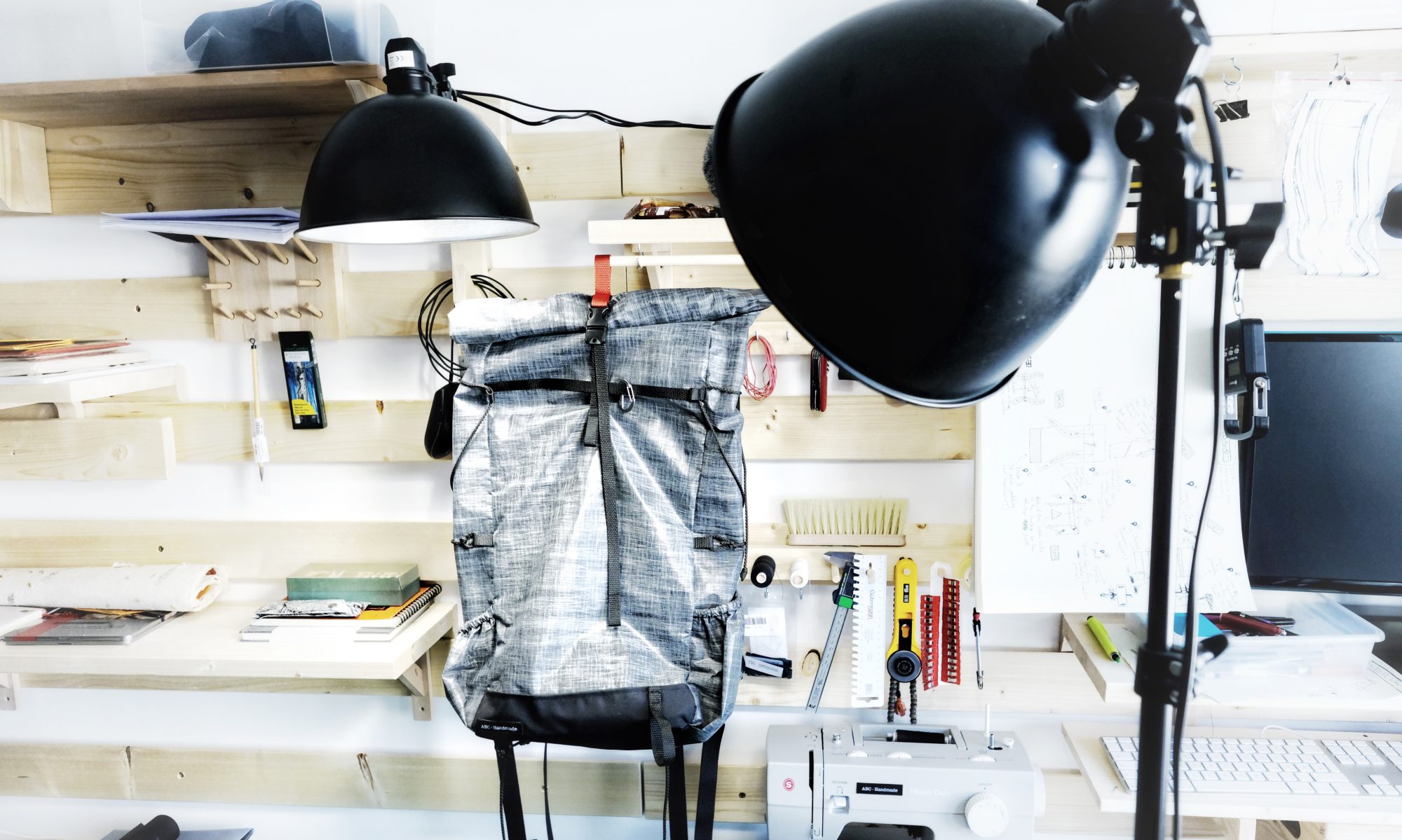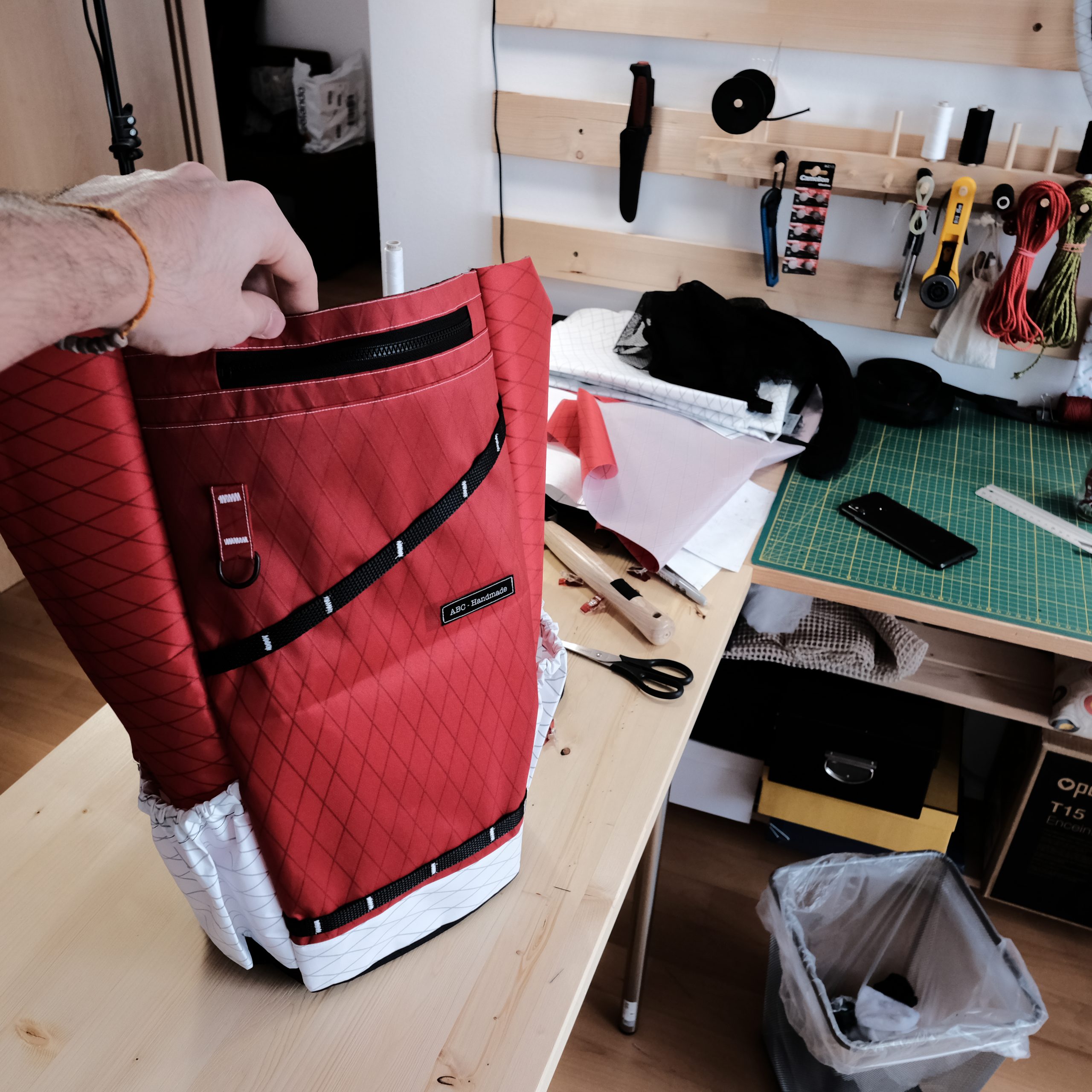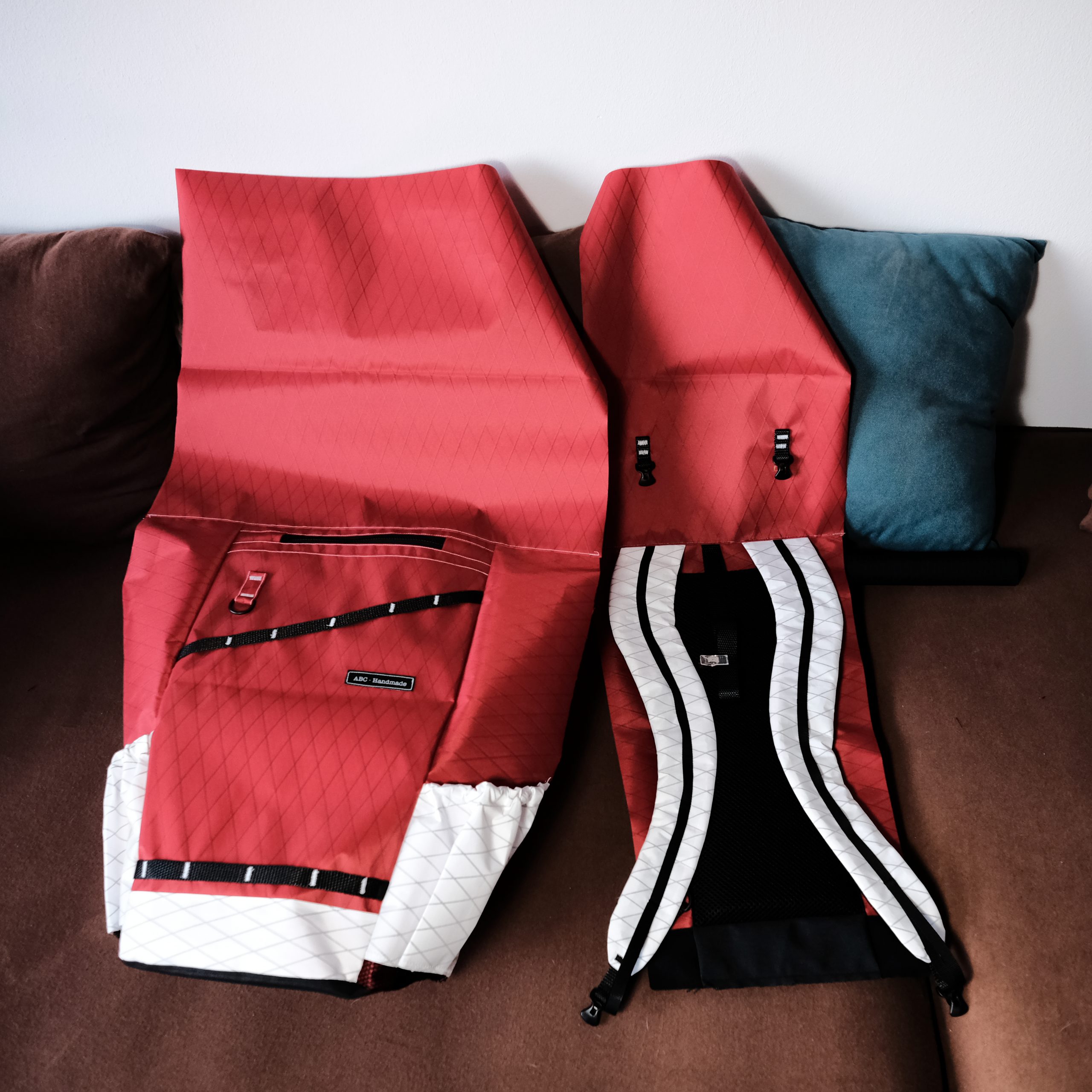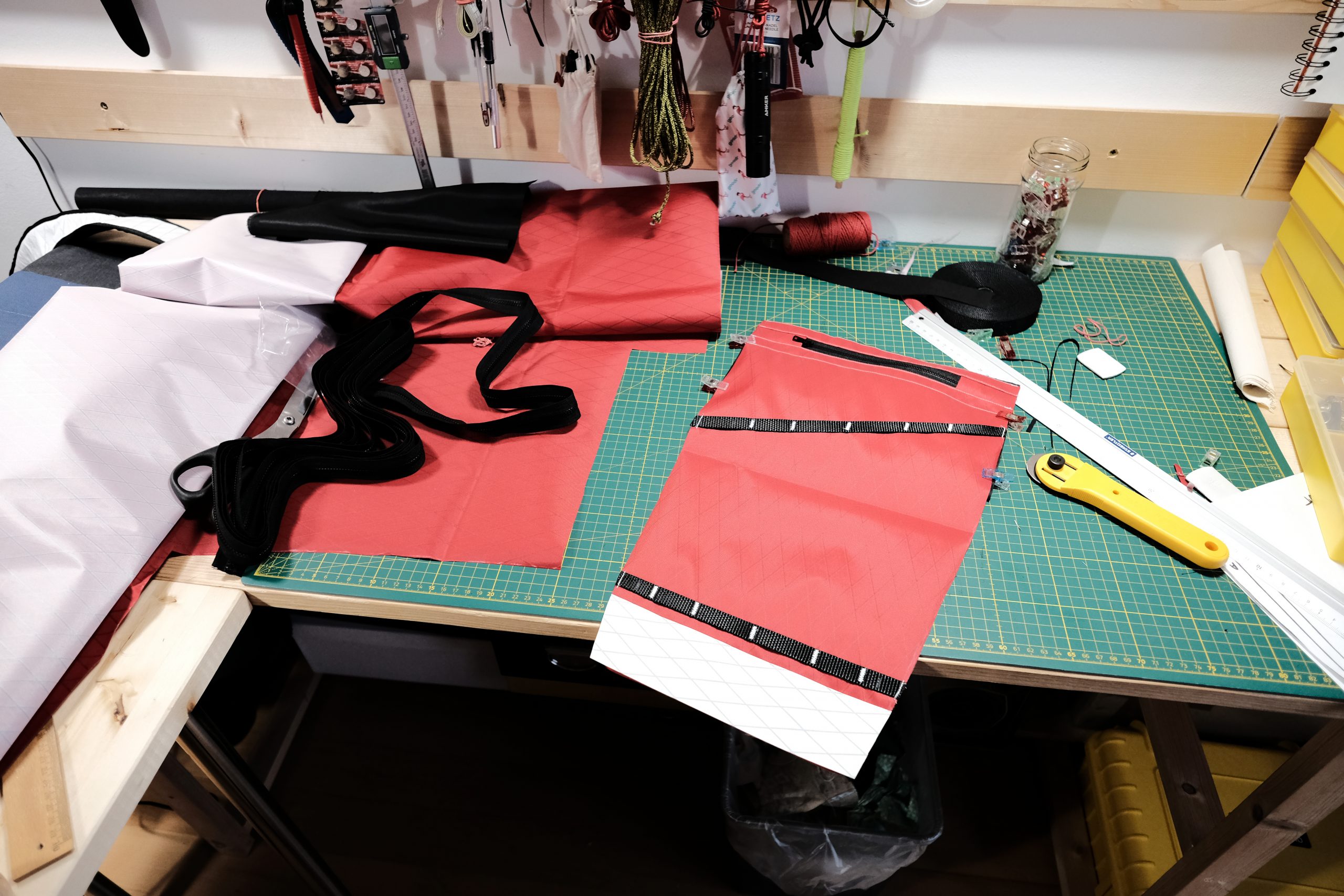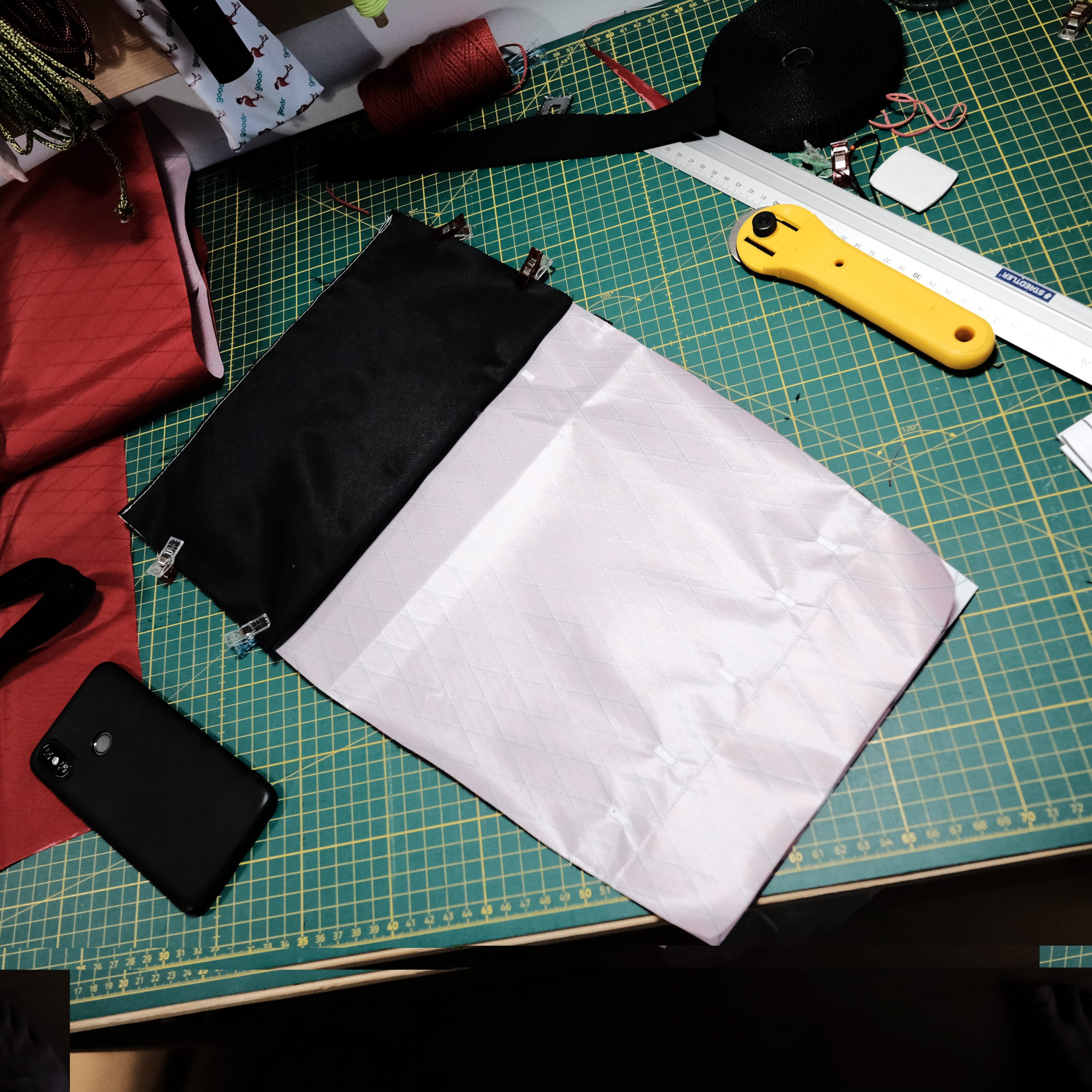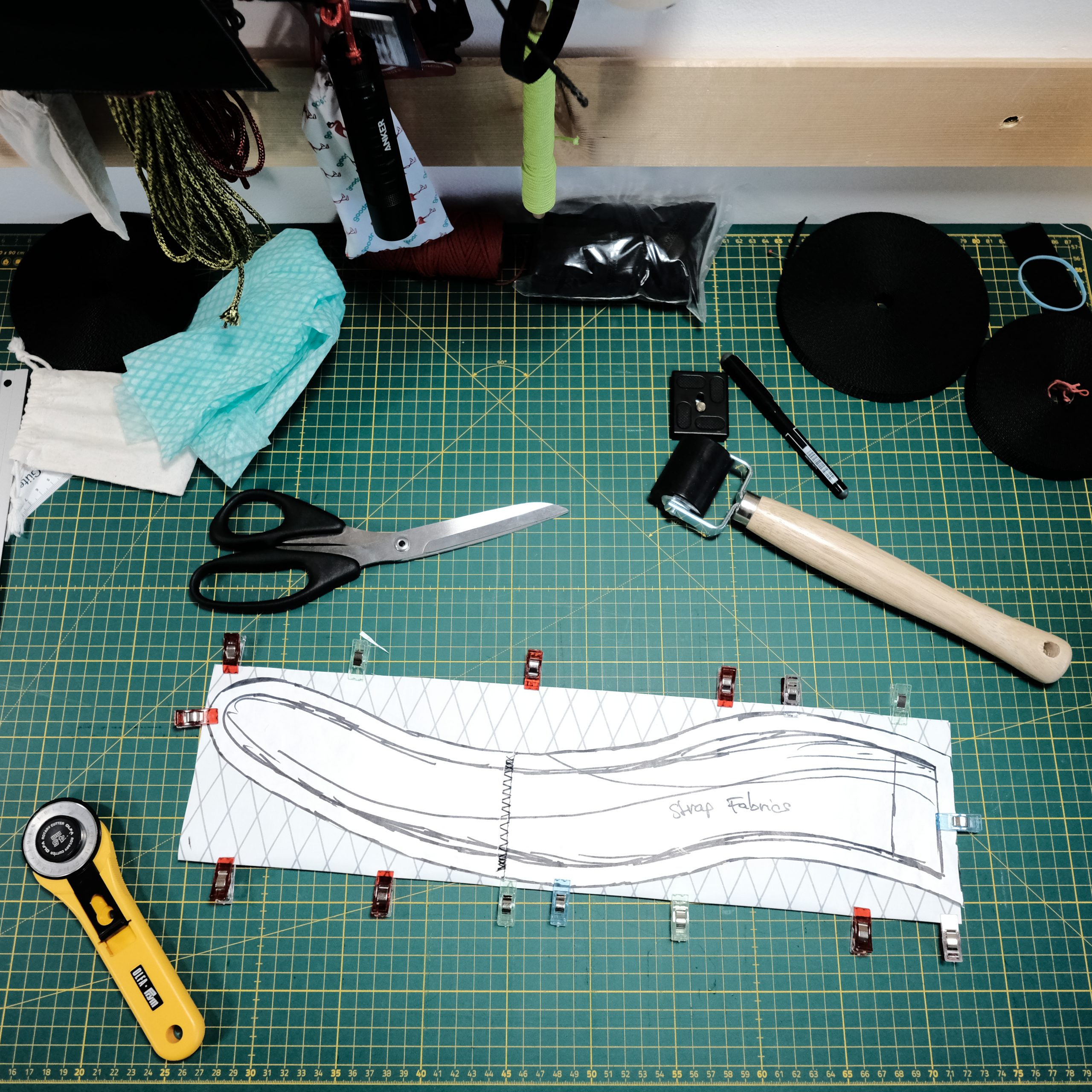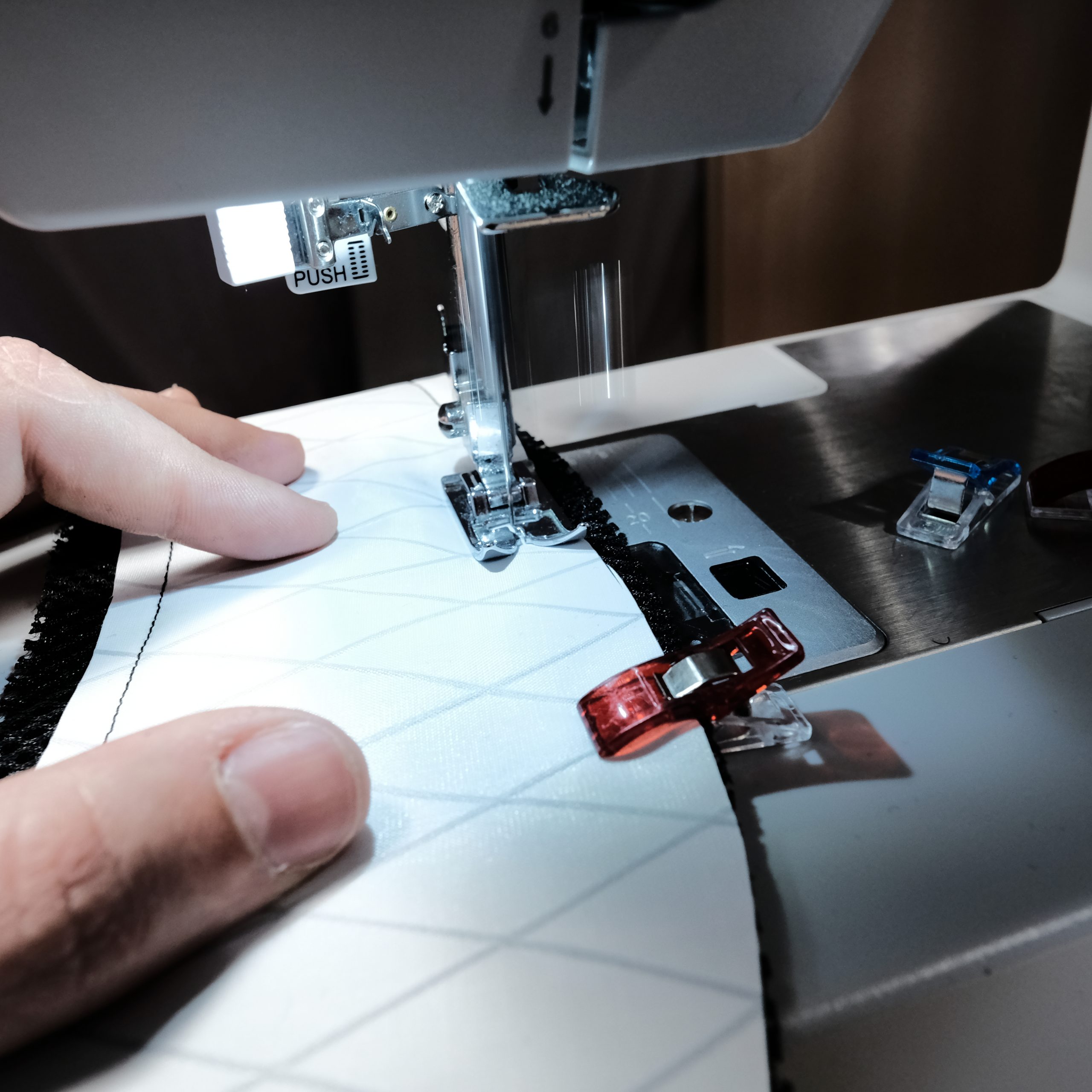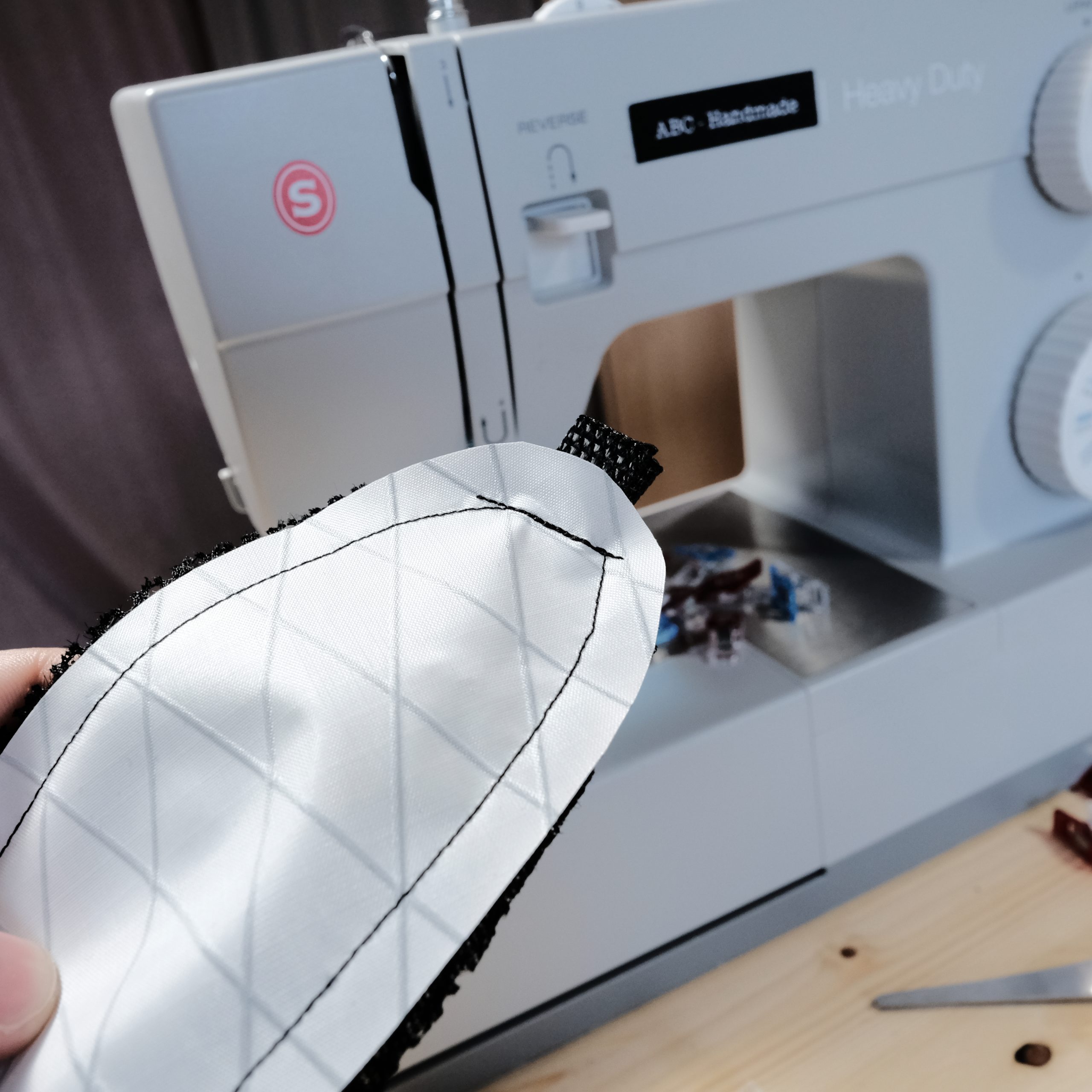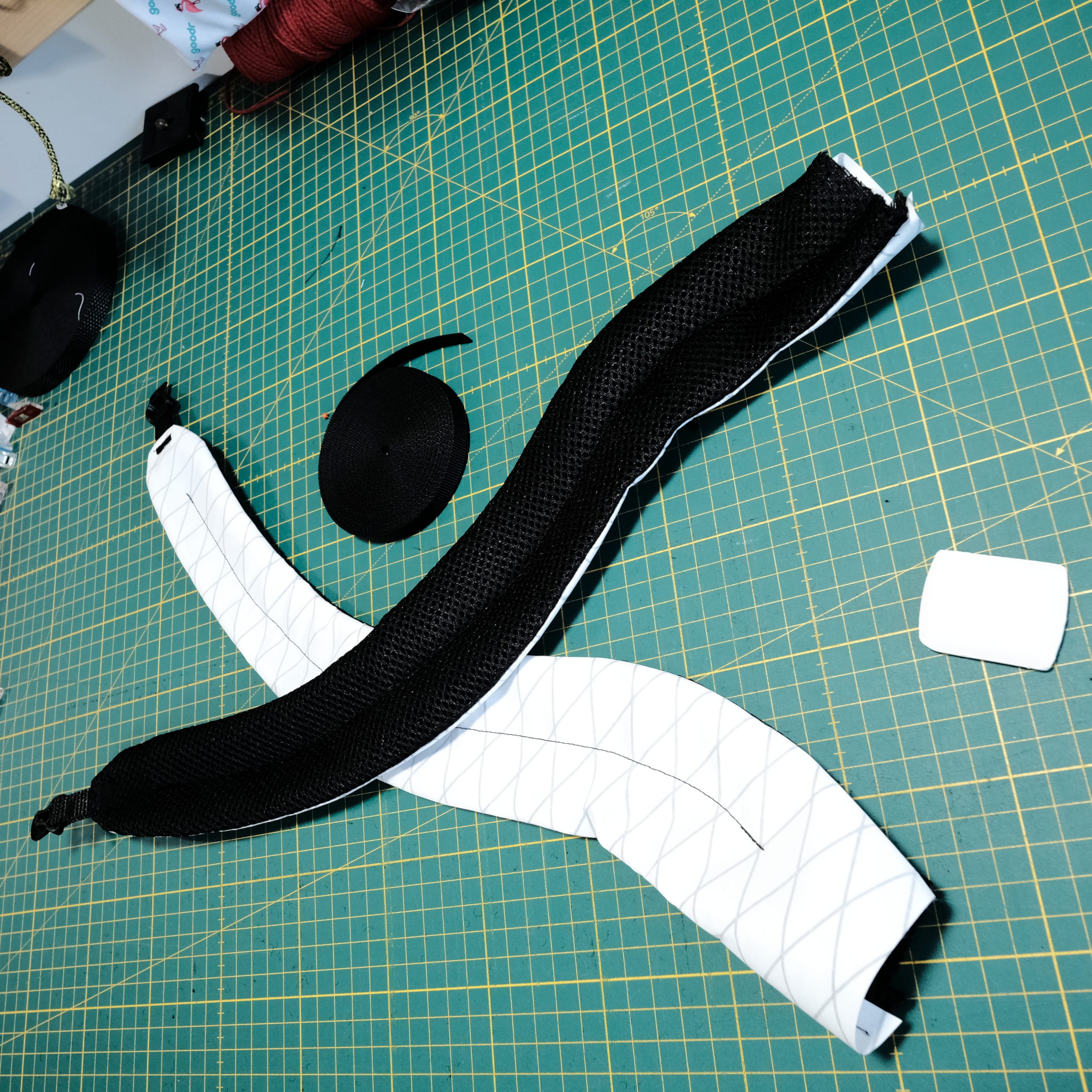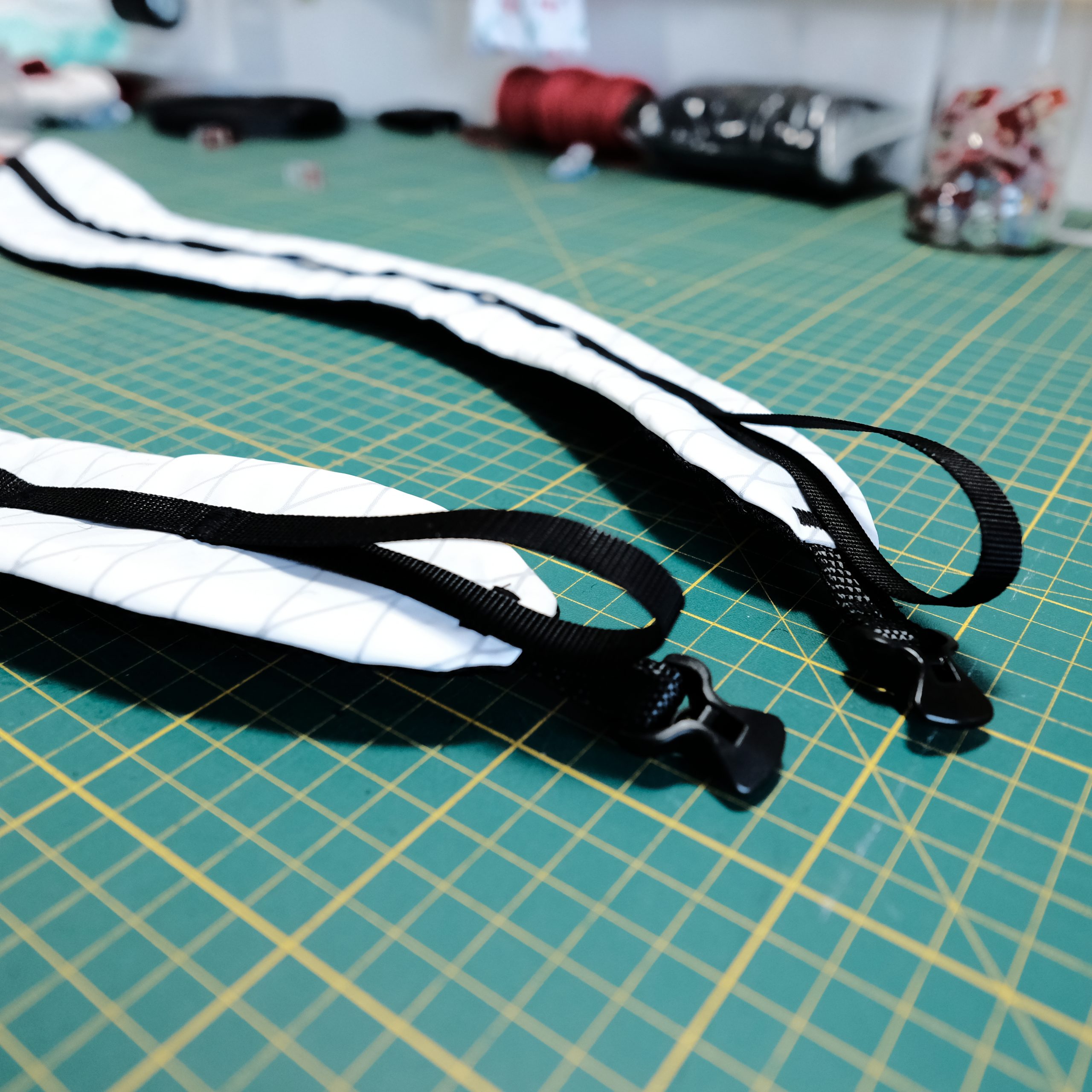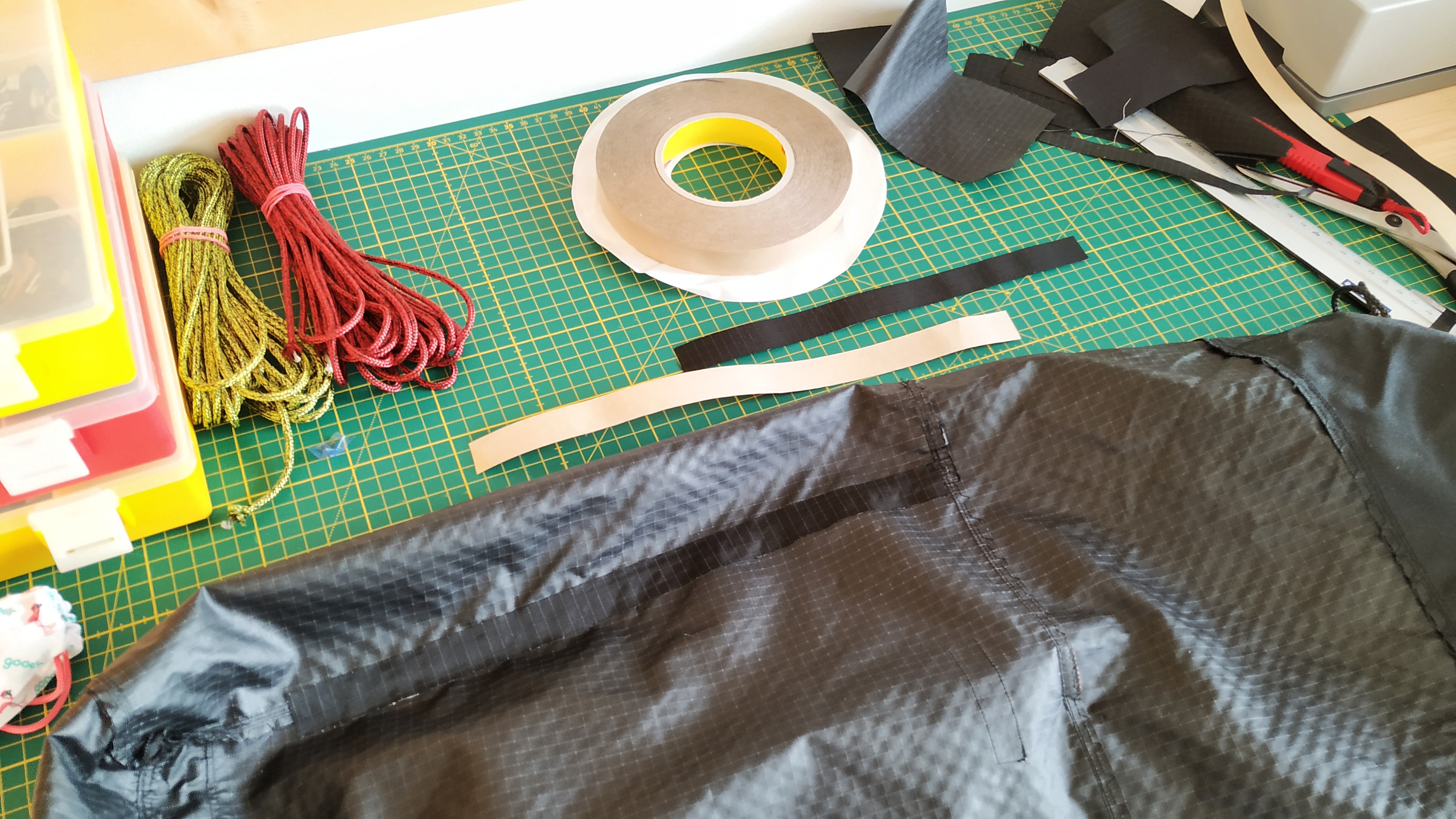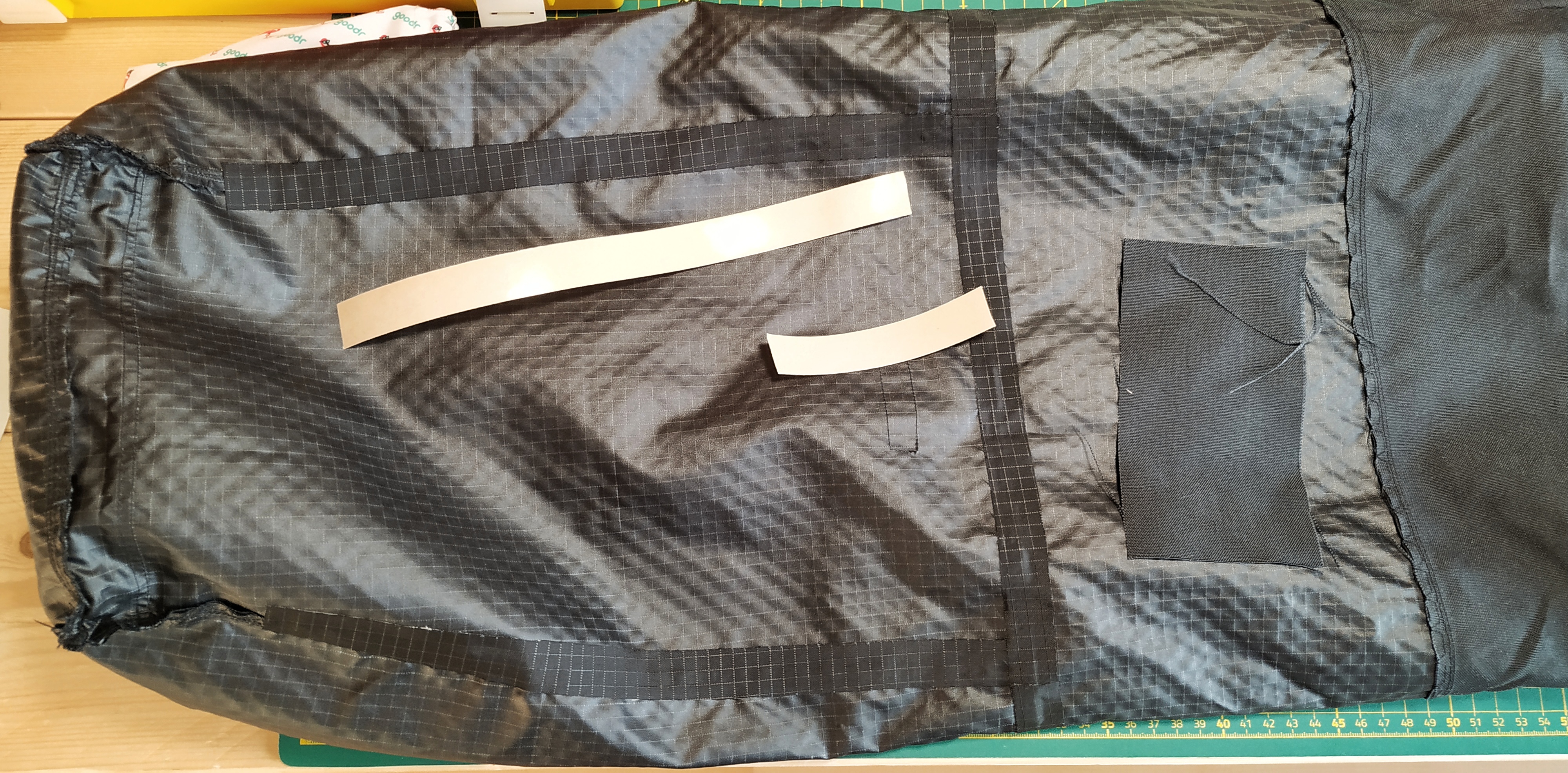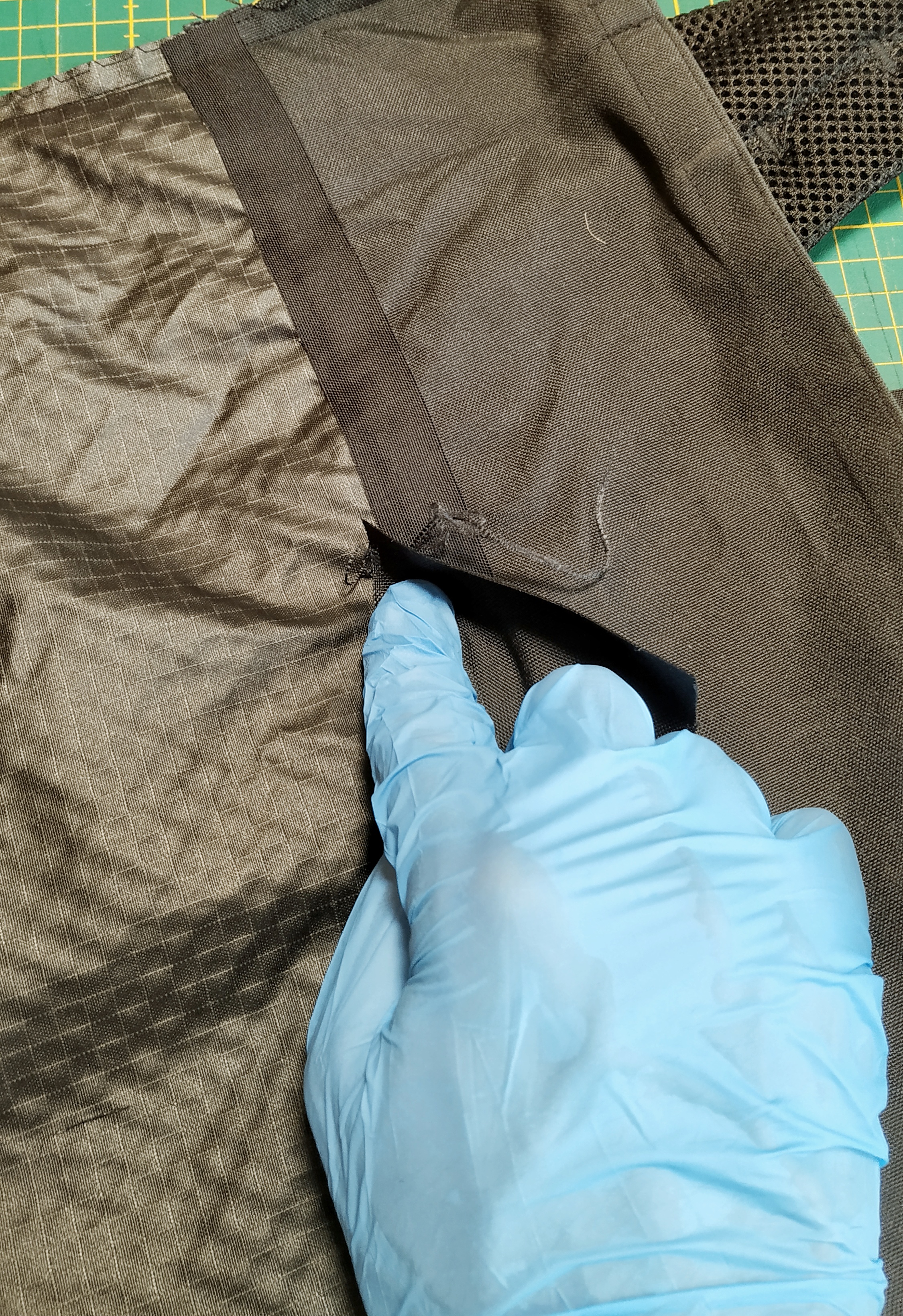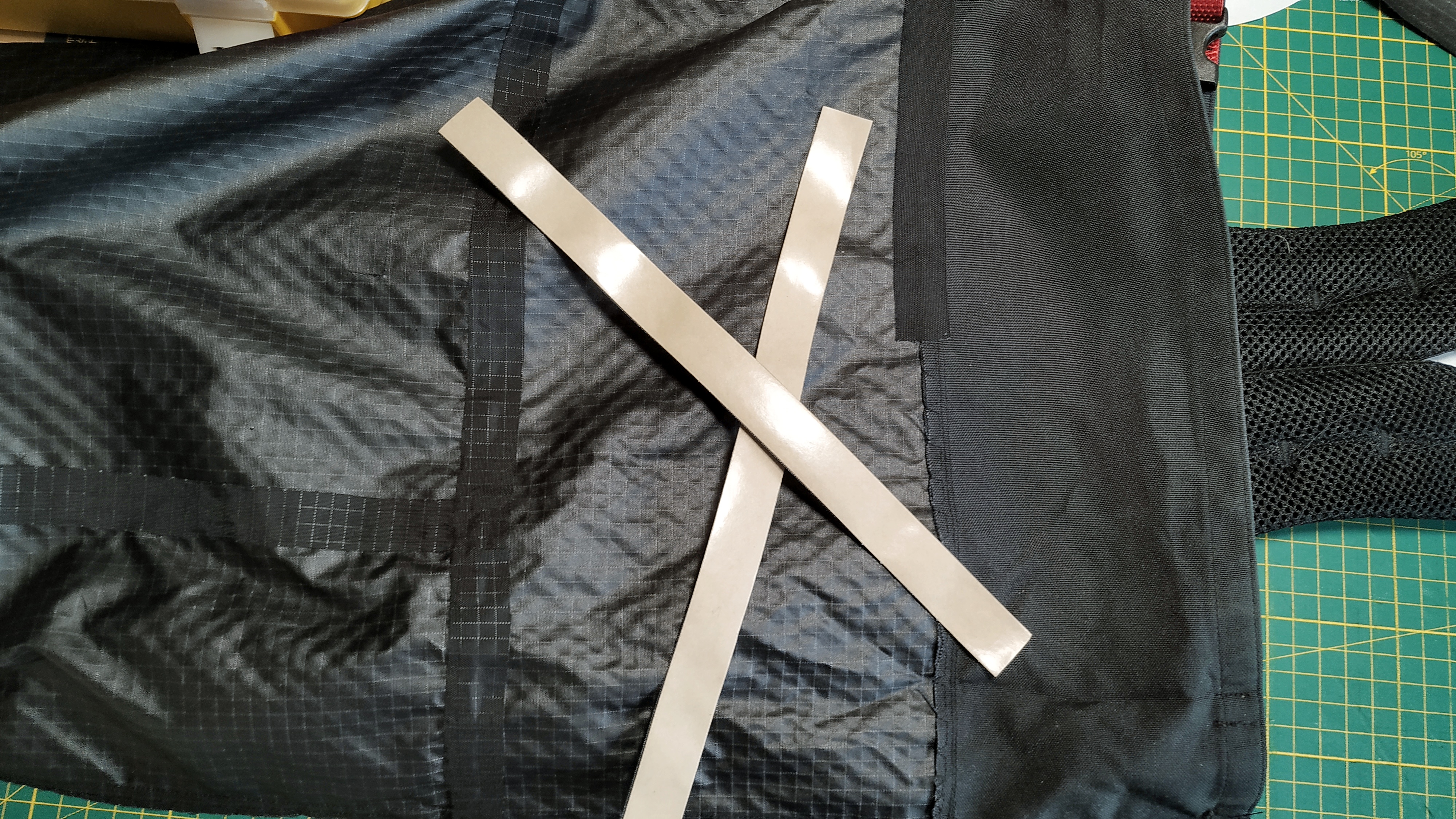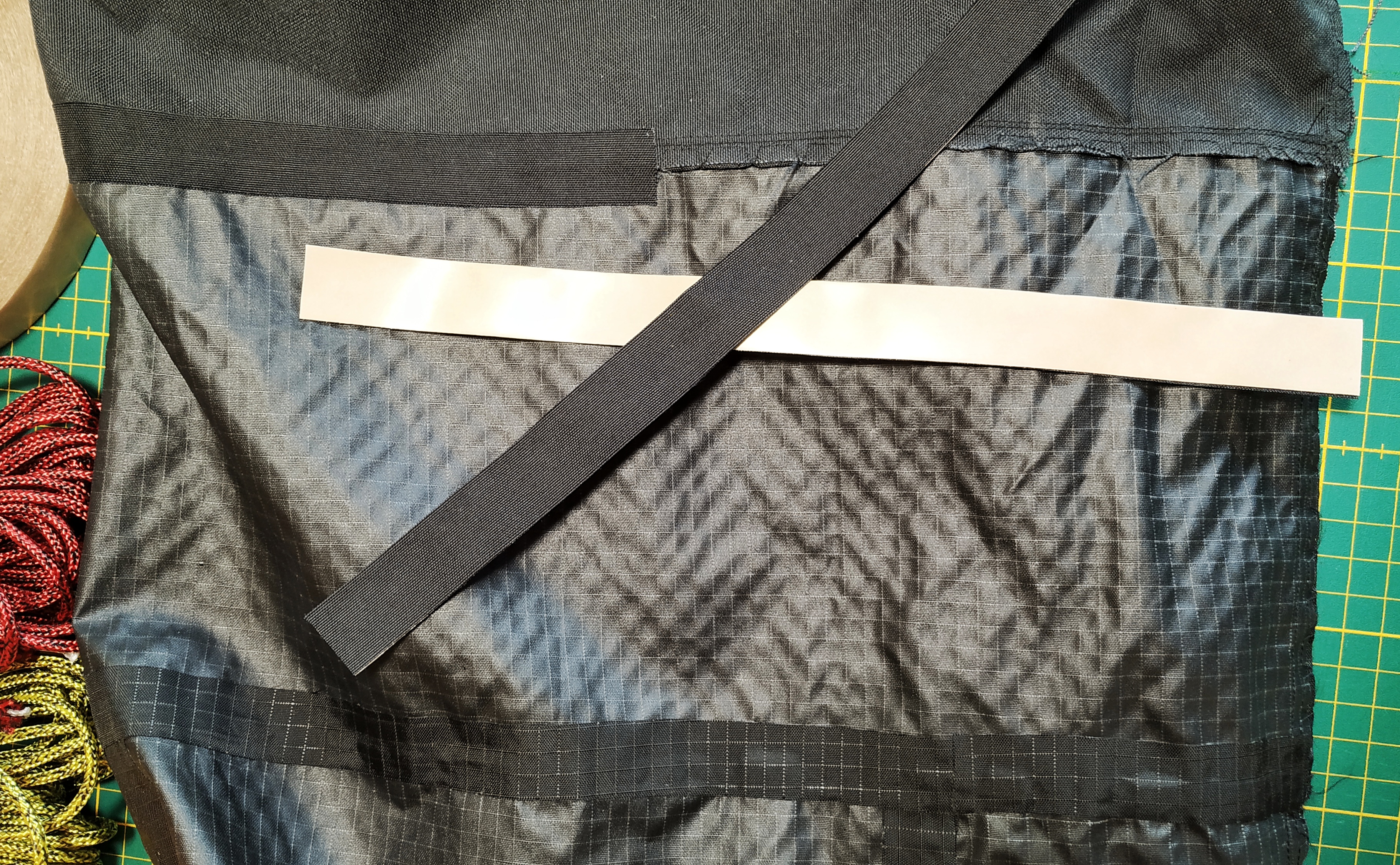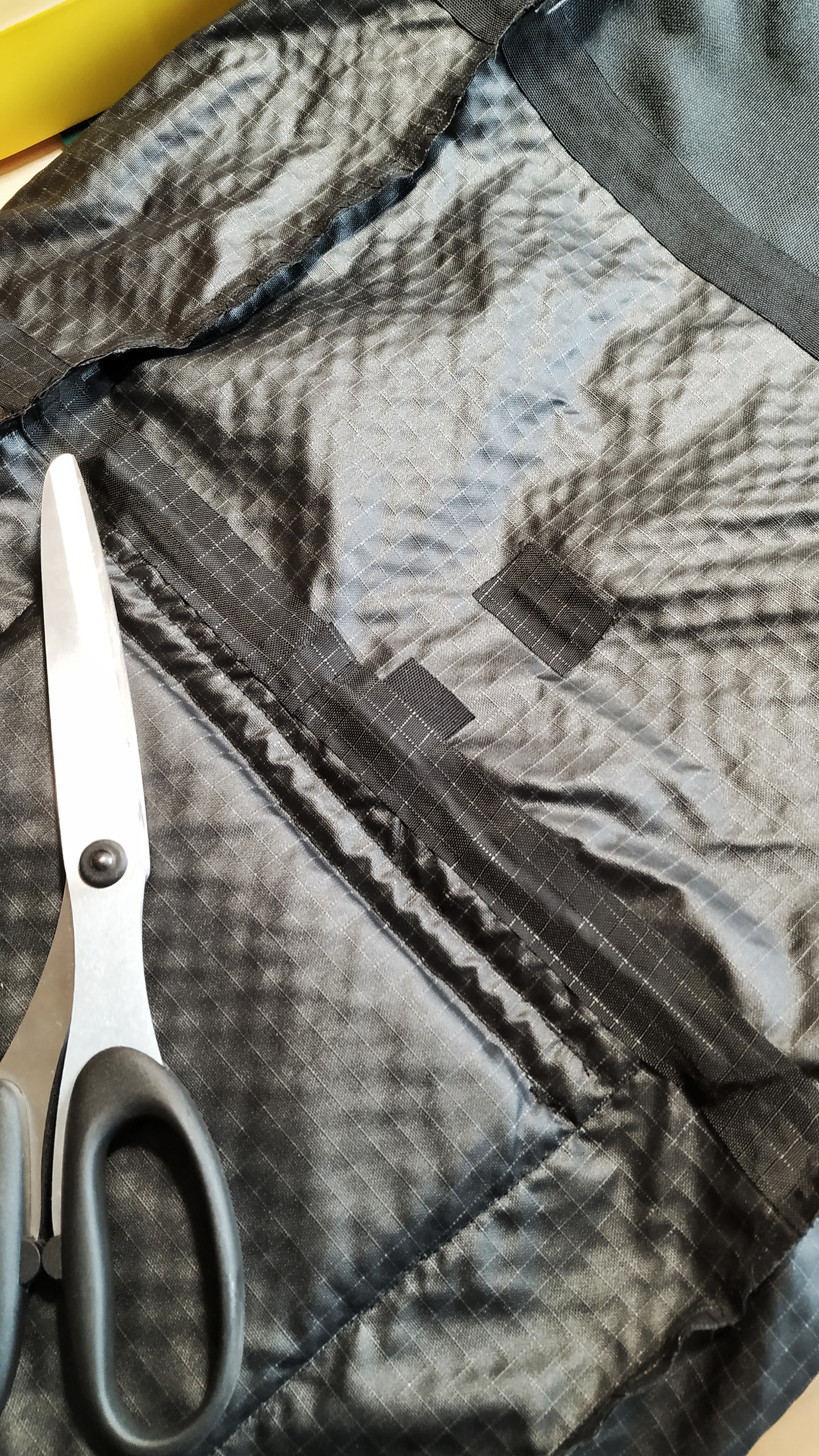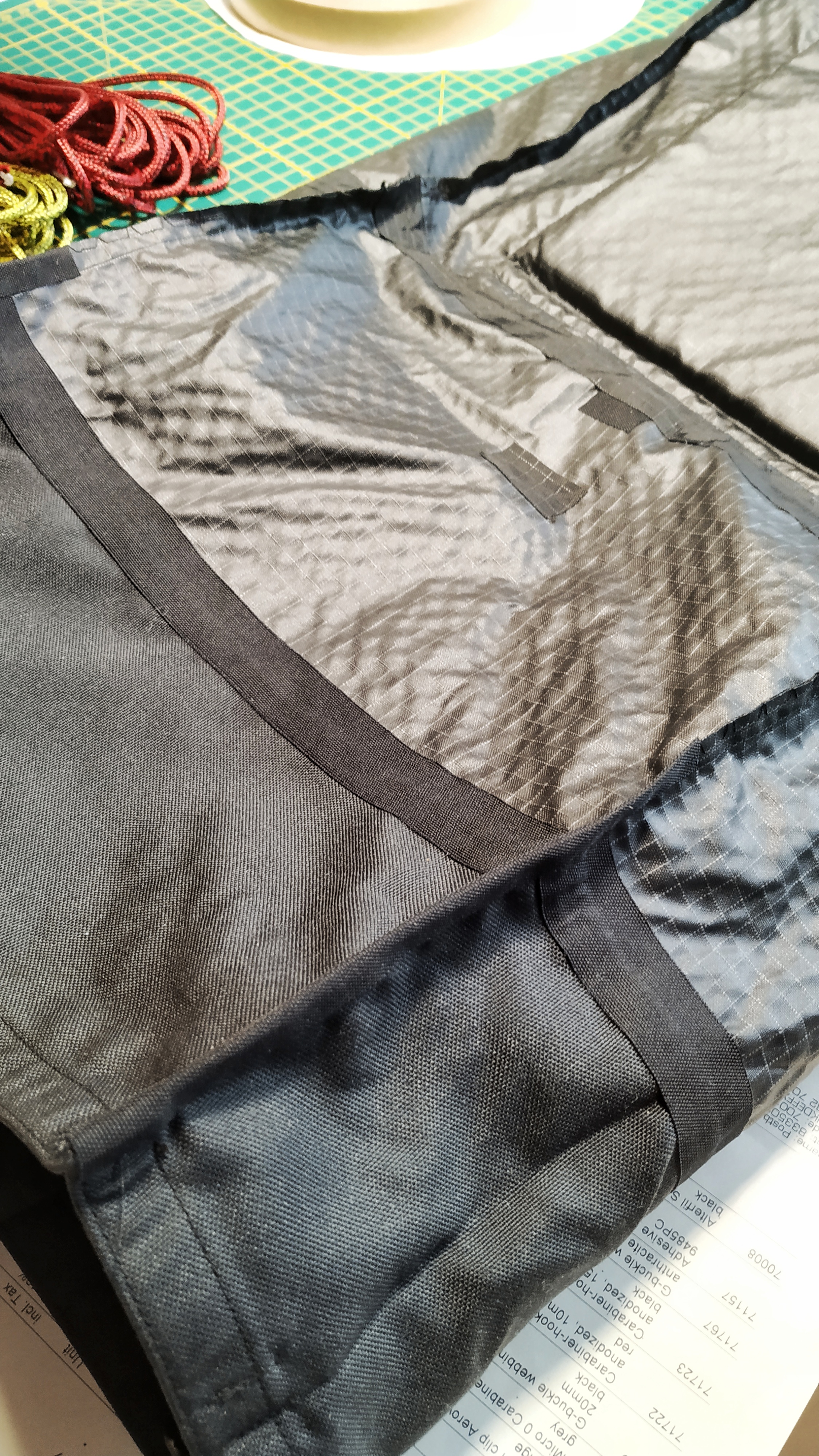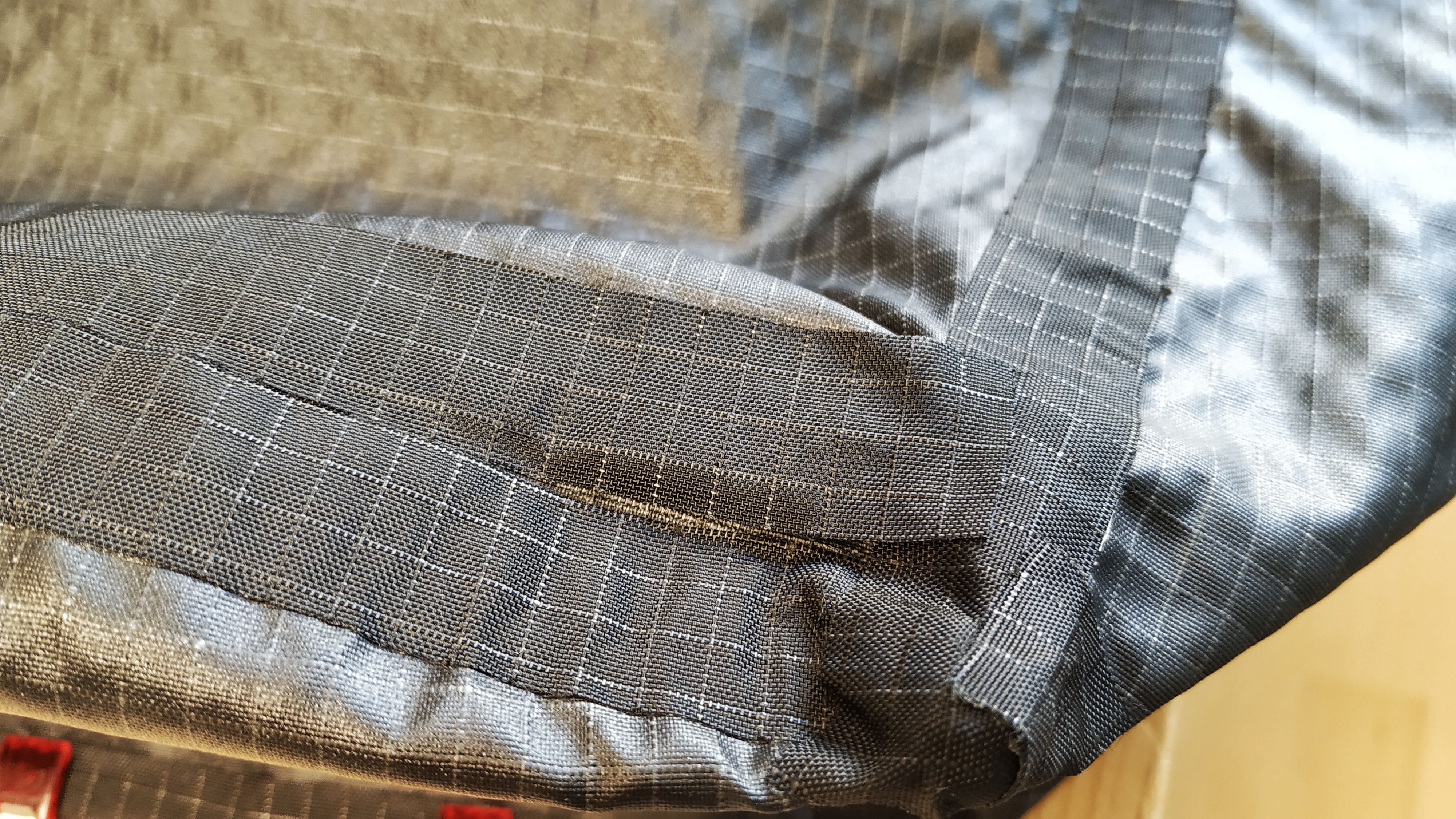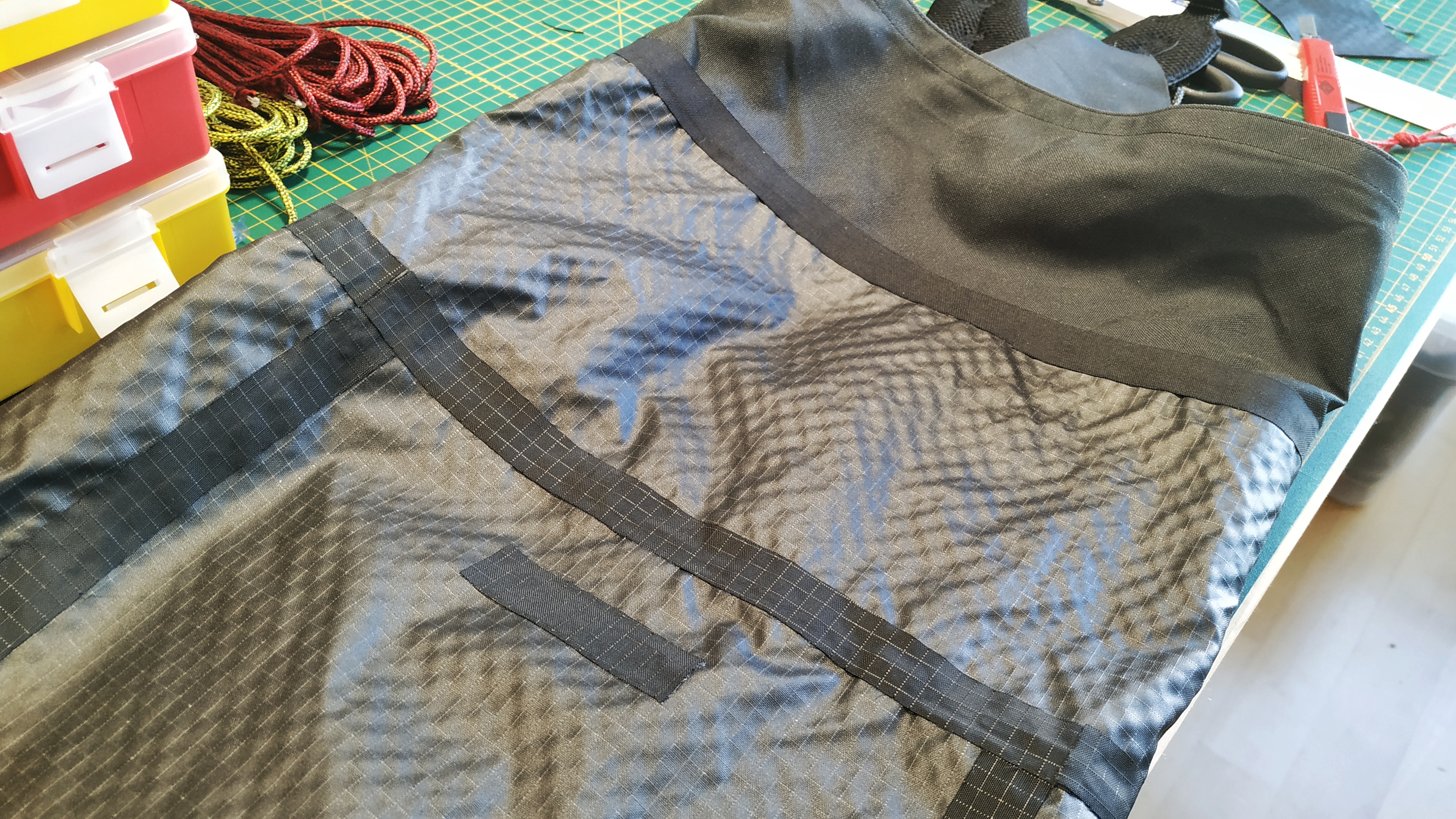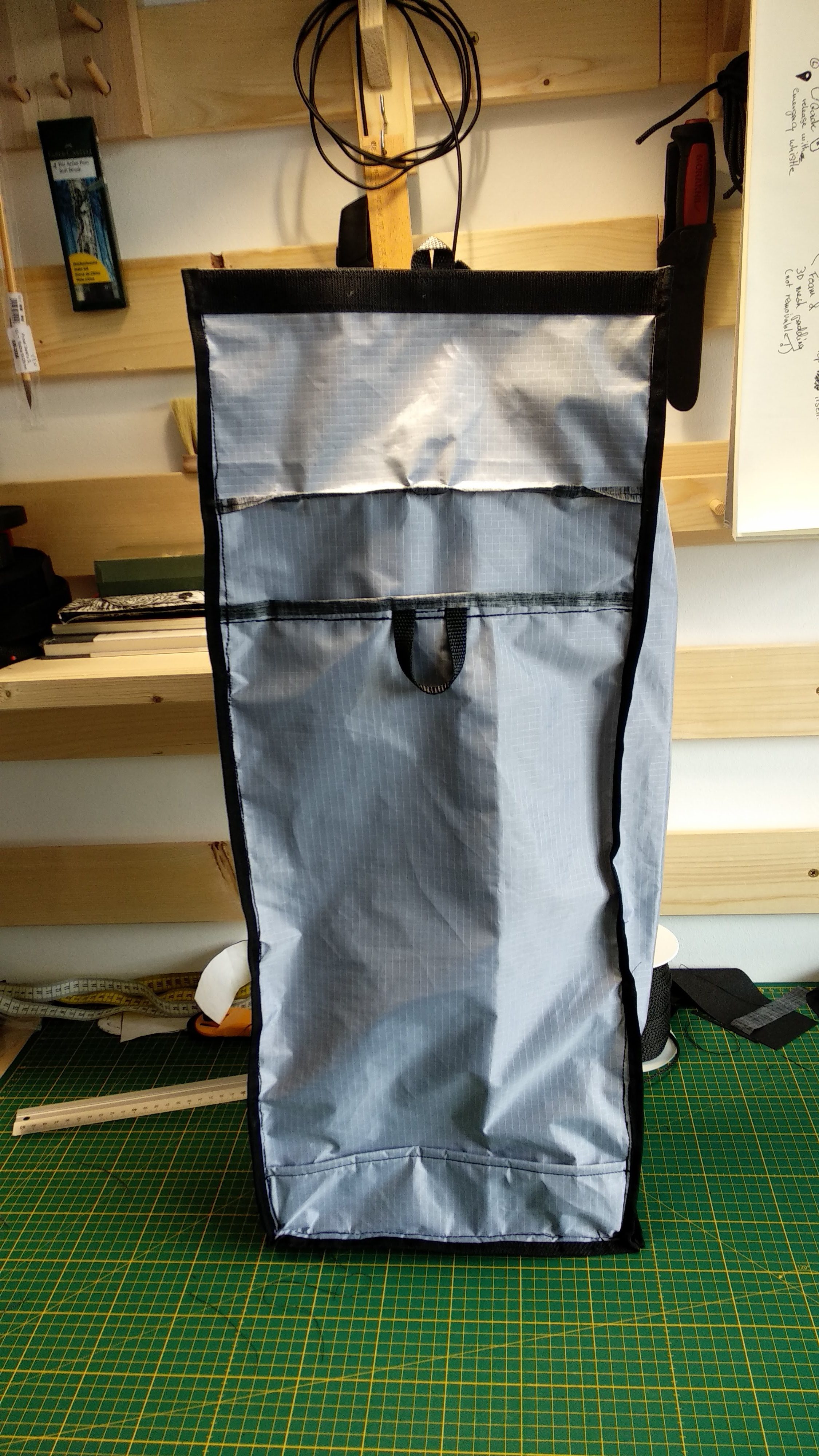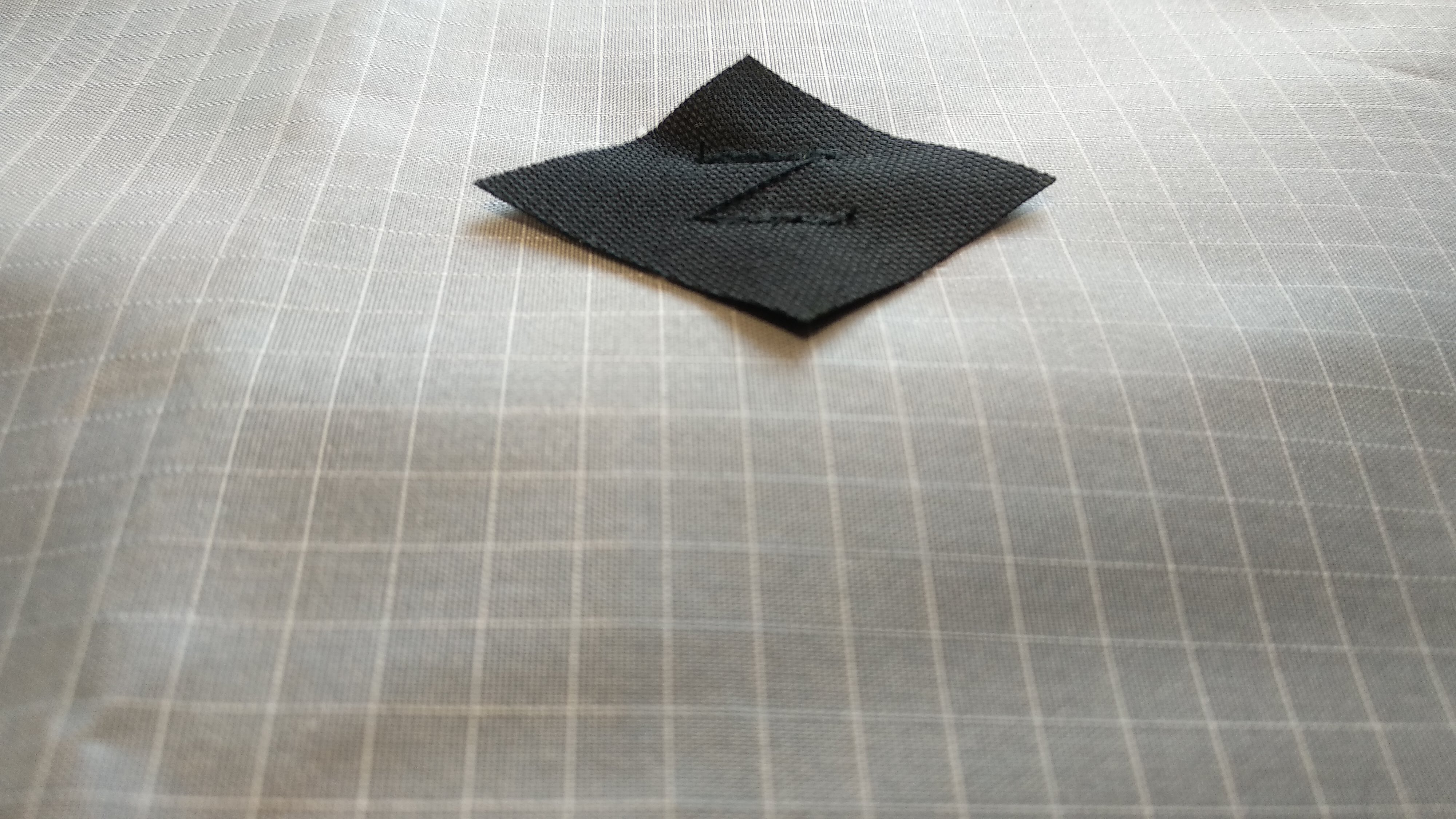The back panel is probably the most interesting part of that pack. Since it is an ultralight children’s pack, I added a shoulder strap’s height adjustment option to let the pack grow with the owner.
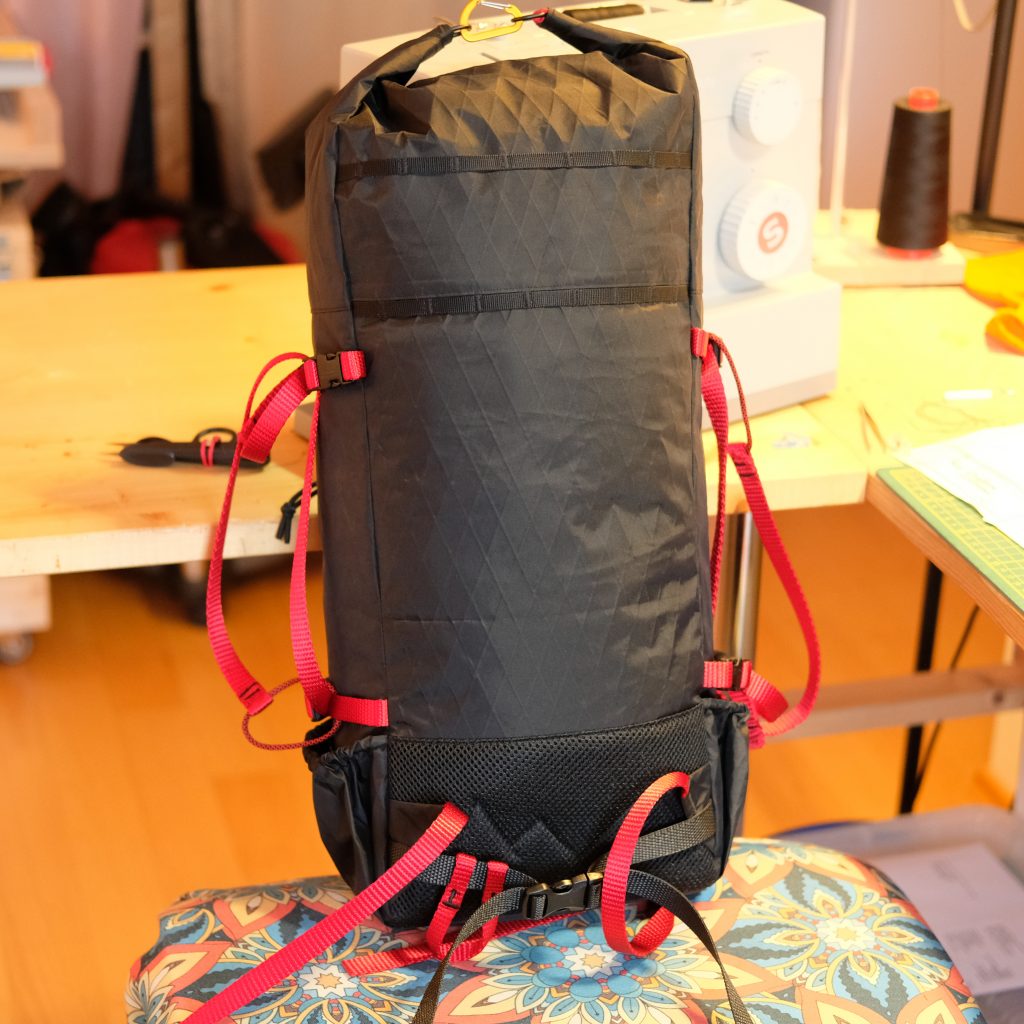
The back panel also contains a padding sleeve with a hook and loop tape closure to be able to add a foam pad and some more structure is required.
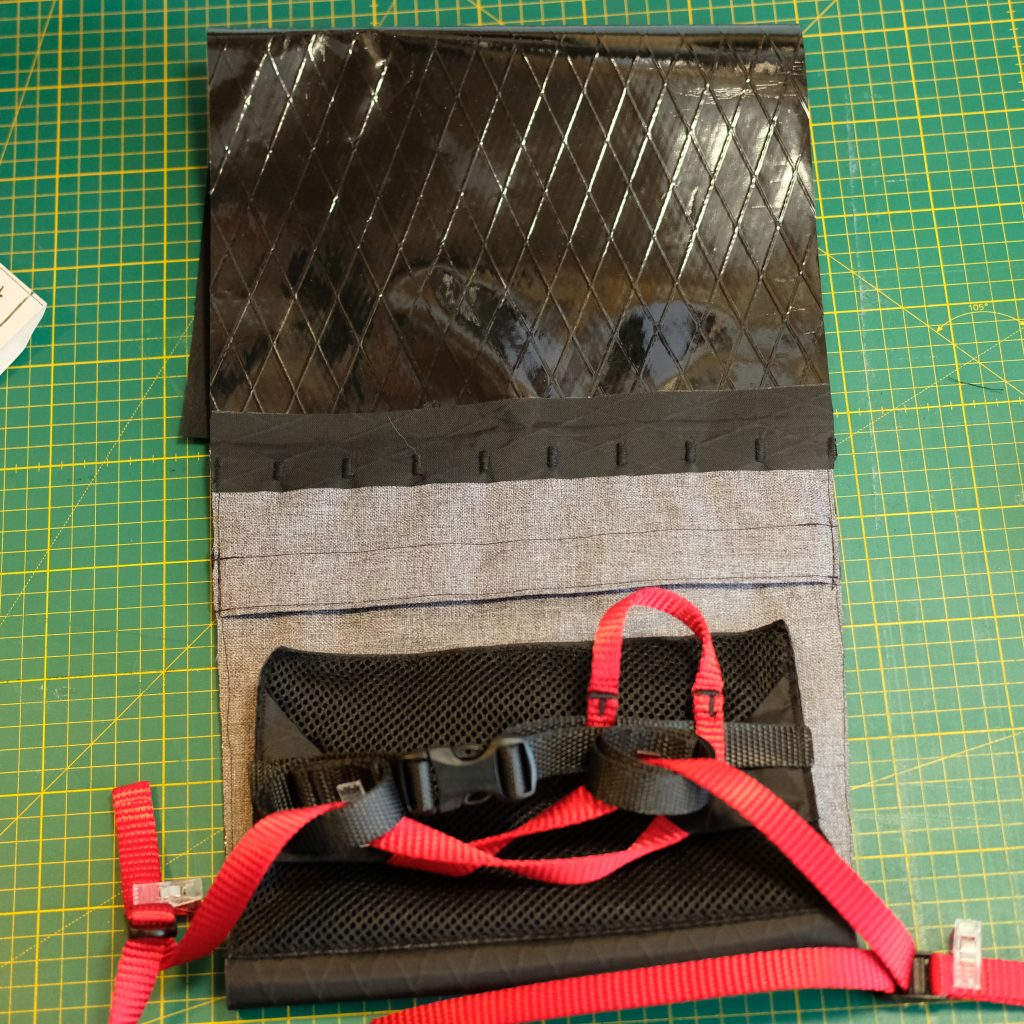
The daisy chains will be taking some serious load when the pack is full and skis are hanging on its sides. So the daisy chains will need to hold under strain. The achieve that, the pack’s fabric is carefully strengthened along the daisy chain. In the following pictures, the daisy chain is blending with a folded seam. It also is the point where the padding sleeve is sewn into the back panel, which backs the fabric without any specific weight penalty. Nonetheless, the seam is sealed and hidden with a strip of VX21 RC, which also adds strength to the bartacks, totaling the layers of fabrics to 3 behind the webbing.










The rest of the back panel is relatively simple. Thee is a thin layer of closed-cell foam and 3D mesh on the lower part, decorated with a mountain-top pattern.


The shoulder straps lower attachment is a standard load-bearing triangle and webbing designed to use with a nylon ladder-lock buckle. A lightweight hip belt is also important, since the pack loaded with skis would have an unusually low center of gravity. I added a removable gear loop on the hip belt





There you have it! These were the most important details of the pack’s back panel.

Since you read it until the end, here are a couple of bonus pictures that did not make the cut.





Have a great day!
